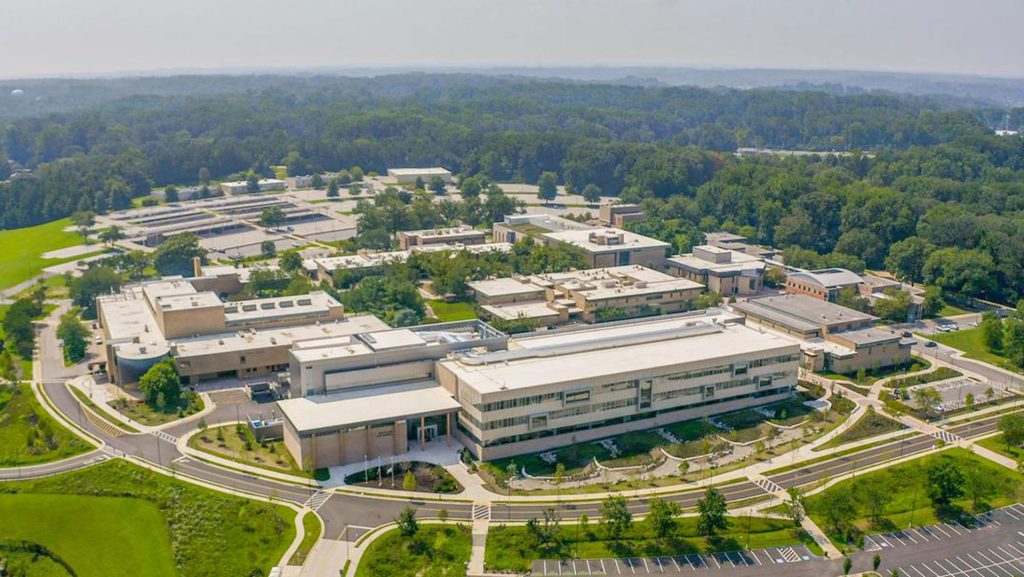Community colleges serve as a vital gateway to higher education, providing affordable, flexible, and career-oriented learning opportunities. These institutions play a critical role in bridging the gap between high school and four-year universities, offering students a cost-effective path to earning degrees, gaining technical skills, and entering the workforce.
In this article, we explore the role of community colleges, their benefits, challenges, and how they contribute to lifelong learning and workforce development.
1. What Are Community Colleges?

Community colleges, also known as junior colleges or technical colleges, are two-year institutions that offer:
- Associate degrees (e.g., Associate of Arts (AA), Associate of Science (AS)).
- Vocational and technical training (e.g., healthcare, IT, engineering).
- Certificate programs for in-demand careers.
- Affordable pathways to four-year universities through transfer programs.
📌 Fun Fact: Nearly 40% of U.S. undergraduate students are enrolled in community colleges.
2. Benefits of Community Colleges
Community colleges provide accessible, flexible, and career-focused education for diverse learners.
A. Affordability: Lower Tuition Costs
📌 Why It Matters: Community college tuition is significantly lower than four-year universities.
Average annual tuition:
- Community colleges: ~$3,800 per year.
- Public universities: ~$10,000 per year (in-state), ~$27,000 (out-of-state).
- Many students receive financial aid, scholarships, and grants.
- Reduces student loan debt, making higher education more affordable.
📌 Example: A student attending a community college for two years before transferring to a university can save thousands of dollars in tuition.
B. Flexible Scheduling for Diverse Learners
📌 Who Benefits: Working adults, part-time students, and parents who need flexible schedules.
- Evening, weekend, and online classes allow students to balance education with work and family responsibilities.
- Rolling admissions and multiple start dates provide greater accessibility.
- Some programs offer self-paced learning for convenience.
📌 Example: A working parent can take night courses at a community college while keeping a full-time job.
C. Transfer Pathways to Four-Year Universities
📌 Why It Matters: Community colleges offer affordable pathways to a bachelor’s degree.
- Many states have articulation agreements, allowing students to transfer credits seamlessly to four-year universities.
- Students can complete general education requirements before transferring.
- Some universities guarantee admission for community college graduates.
📌 Example: California’s community college system allows students to transfer to UC and CSU campuses through a guaranteed transfer program.
D. Career and Technical Education (CTE) Programs
📌 Why It Matters: Many careers require technical training, not four-year degrees.
- High-demand fields: Nursing, cybersecurity, automotive technology, HVAC, welding.
- Hands-on experience with internships and apprenticeships.
- Employers actively recruit from community college programs.
📌 Example: A student earning a two-year nursing degree (Associate Degree in Nursing – ADN) can enter the workforce faster than a traditional four-year nursing program.
E. Smaller Class Sizes and Personalized Learning
📌 Why It Matters: Students receive more one-on-one attention from instructors.
- Average class size: 20-30 students (vs. 100+ at universities).
- Faculty focus on teaching over research, making them more accessible.
- Extra support services like academic advising, tutoring, and career counseling.
📌 Example: A student struggling in math receives personalized tutoring to succeed.
3. Challenges Facing Community Colleges
Despite their benefits, community colleges face several challenges that impact student success.
A. Lower Graduation and Transfer Rates
📌 The Issue: Many students drop out before earning a degree or transferring.
- Only 40% of community college students complete a degree or certificate within six years.
- Challenges include financial barriers, job responsibilities, and academic struggles.
📌 Possible Solution: Expanding mentorship programs, financial aid, and academic support.
B. Stigma Around Community Colleges
📌 The Issue: Some people perceive community colleges as less prestigious than four-year universities.
- In reality, many community college graduates outperform university students in job readiness.
- Some of the best-paid jobs (e.g., tech, healthcare, skilled trades) require community college education.
📌 Possible Solution: Raising awareness about career success stories from community college alumni.
C. Limited Funding and Resources
📌 The Issue: Community colleges receive less funding than four-year institutions.
- Fewer resources for student services, technology, and facilities.
- Faculty may be underpaid compared to university professors.
📌 Possible Solution: Increased government funding and private sector partnerships.
D. Balancing Work, Family, and School
📌 The Issue: Many community college students work full-time or have family obligations.
- 60% of community college students work while attending school.
- Many students struggle with time management and stress.
📌 Possible Solution: Offering more online and flexible class options.
4. The Role of Community Colleges in Workforce Development
Community colleges play a key role in filling job market gaps and providing skilled workers in growing industries.
- Healthcare Careers: Nursing, medical assisting, dental hygiene.
- Technology Fields: Cybersecurity, data analytics, coding boot camps.
- Skilled Trades: Electricians, plumbers, HVAC technicians.
- Manufacturing and Engineering: Welding, robotics, aerospace technology.
📌 Example: Many IT companies partner with community colleges to train students in cybersecurity and cloud computing.
5. The Future of Community Colleges
Community colleges are evolving to meet changing workforce demands and new learning trends.
A. Growth of Online Learning and Hybrid Education
- More asynchronous courses for busy students.
- Virtual reality (VR) and AI-driven learning tools.
- Expanded use of EdTech for personalized learning.
📌 Example: Some community colleges offer entire associate degrees online, making education more accessible.
B. Stronger Partnerships with Employers
- Paid internships and apprenticeships in key industries.
- Industry-recognized credentials built into degree programs.
- Job placement services to connect students with employers.
📌 Example: Amazon’s Career Choice Program pays for employees to attend community college to gain new skills.
C. Expanded Bachelor’s Degree Programs at Community Colleges
Some community colleges now offer four-year degrees in high-demand fields.
More affordable than traditional universities.
📌 Example: In states like Florida and Washington, some community colleges offer bachelor’s degrees in nursing, business, and IT.
6. Conclusion: The Power of Community Colleges
Community colleges provide an accessible, affordable, and career-focused education, making them an essential part of the higher education system. By offering flexible learning, workforce training, and transfer opportunities, they help students achieve their academic and career goals without the burden of excessive debt.
With continued innovation, industry partnerships, and student support, community colleges will remain a valuable path to success in the modern workforce. Whether you’re looking for a stepping stone to a university or a direct route to a high-paying career, community college offer limitless possibilities.
Looking for heartfelt inspiration and uplifting content? Visit Blessed Beyond Words for personal stories, faith-based encouragement, and everyday blessings.


